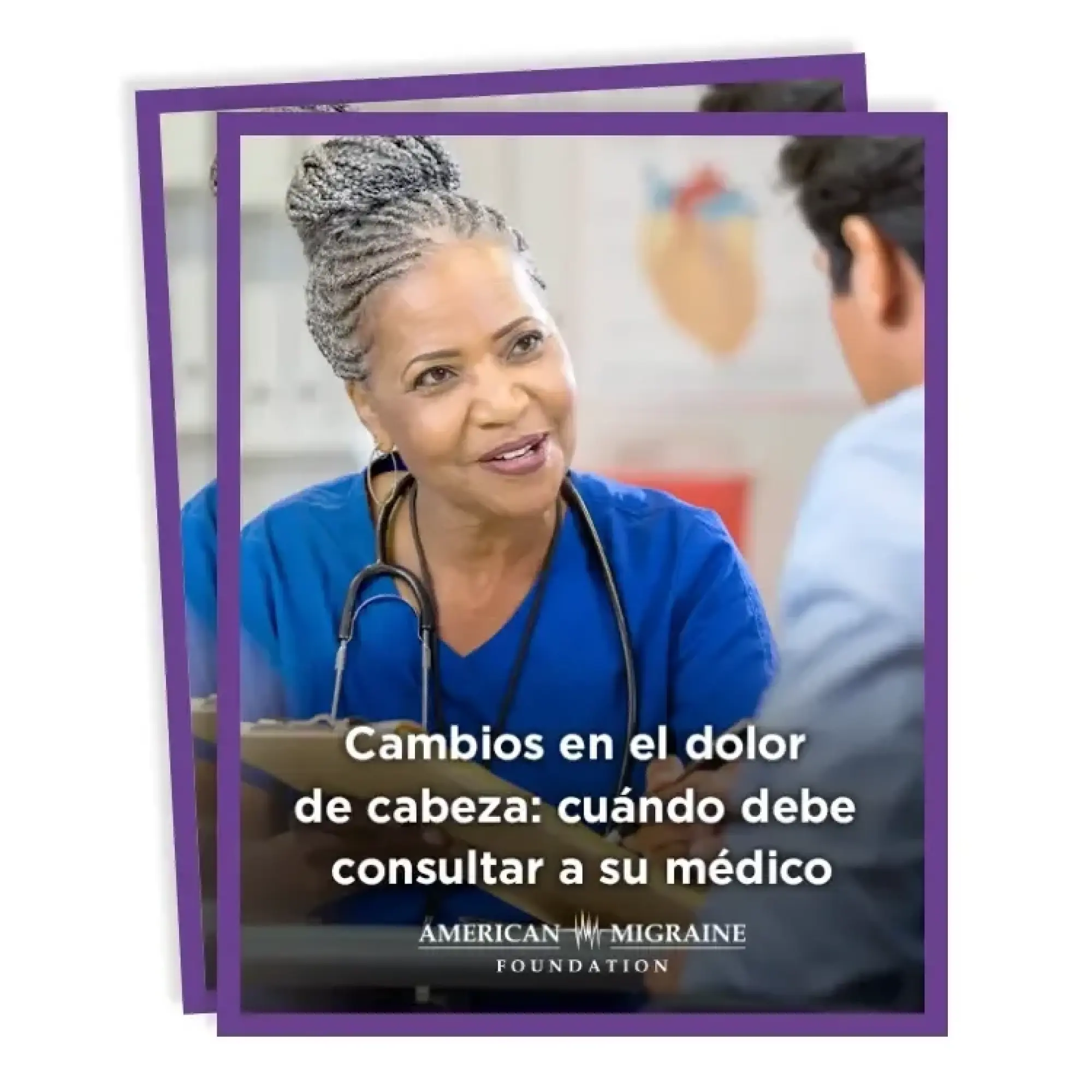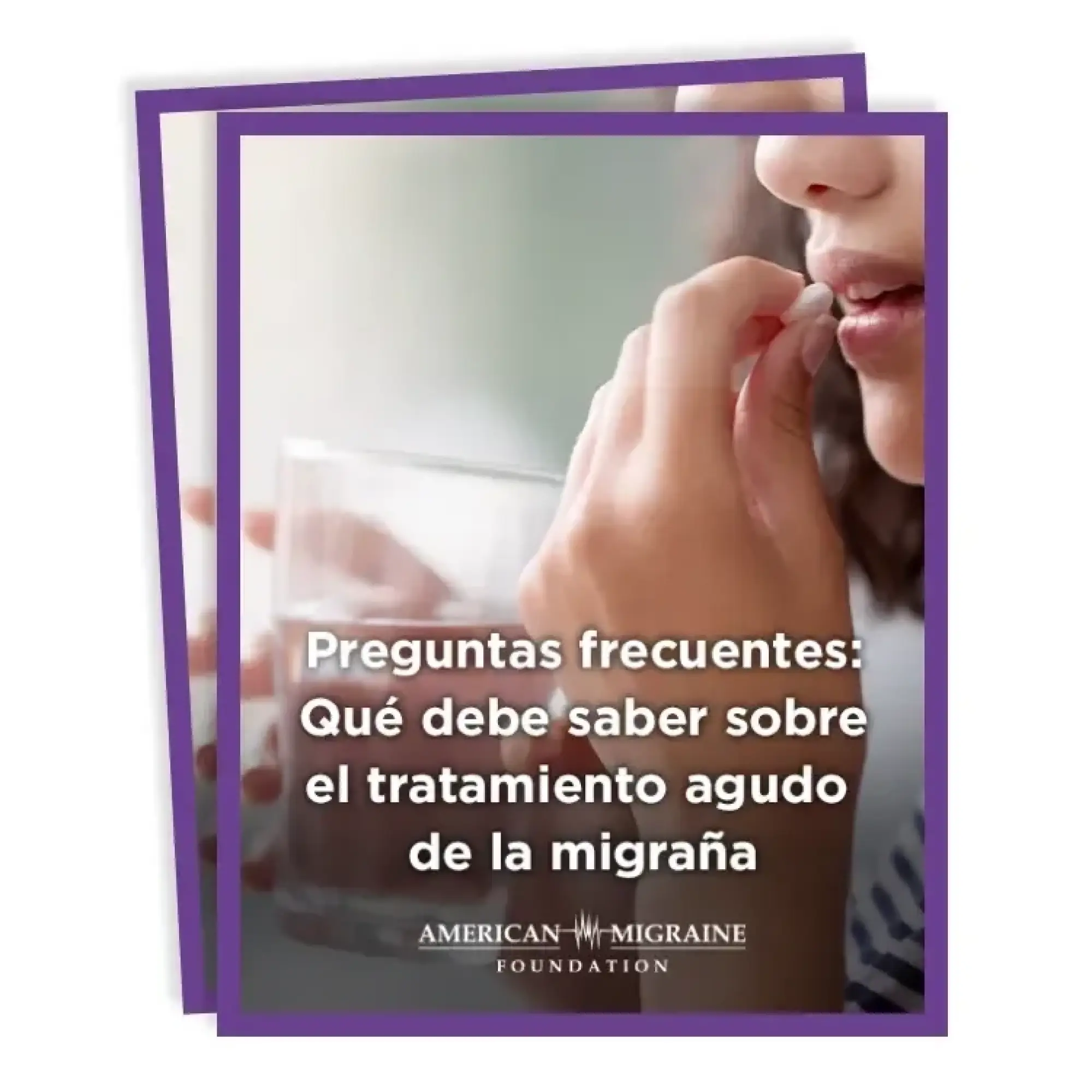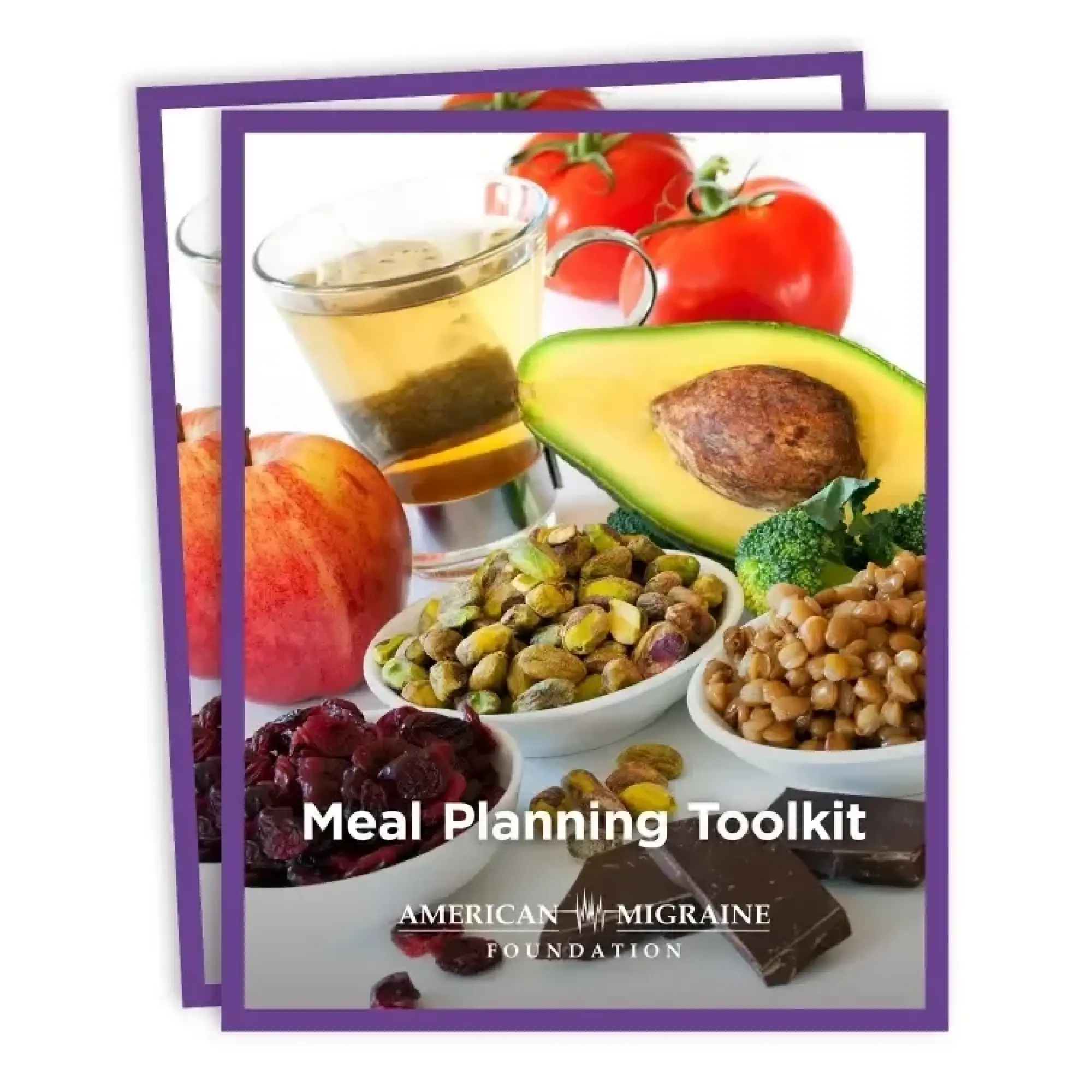Patient Guides
AHS First Contact partnered with the American Migraine Foundation to make these downloadable, doctor-verified patient guides available to our community. Browse our selection of guides and download them with ease.
English Guides

What Type of Headache do You Have?
Outlines primary headache symptoms related to migraine and can help patients determine which type of headache they have.

Changes in Headache: When to See Your Doctor
Describes headache “red flags” and provides information on when to seek medical attention.

Migraine's Contributing Factors
Describes lifestyle and medical factors which may contribute to migraine attacks, as well as recommendations to address them.

Are You at Risk for Chronic Migraine?
Distinguishes between episodic and chronic migraine and offers advice for patients if they suspect their migraine is becoming chronic.

What Is Medication Overuse Headache?
Defines medication overuse headache and offers guidance on how to address it.

What to Do After the Diagnosis
Help people recently diagnosed with migraine cope by giving them tools for finding help and ways to communicate their needs.

Emergency Room Treatment Guide for Migraine Patients
Helps patients with migraine know when to go to the Emergency Department and how to prepare for their visit.

FAQ: Understanding Acute Treatment for Migraine
Answers frequently asked questions and provides a table describing benefits, drawbacks, delivery methods and more for common acute migraine treatments.

A Guide to Nutraceuticals for Migraine
Provides an overview of nutraceuticals as they relate to migraine.

Migraine in Pregnancy
Discusses how to prepare for, and manage, migraine during pregnancy, as well as headache “red flags” to be alert to while pregnant.

What is the Relationship Between Hormones and Migraine?
Discusses the role hormones play in migraine, including information on menses, pregnancy, lactation, and more.

Guide to Healthy Sleep
Describes the role of sleep in migraine, and offers five tips for better sleep.

Migraine at Work
Offers workplace accommodations and gives tips for talking to employers about migraine.

How to Apply for Social Security Disability Income
Walks patients through filing for social security disability income (SSDI), dispels common myths, and includes tips on what to expect along the way.

How to Provide Accommodations for Children With Migraine
Offers tips and accommodations to help parents and schools work together to get children the help they need.
Spanish Guides

La Migraña en el Trabajo
La migraña es más común entre los adultos en edad de trabajar. Esta guía ofrece a las personas con migraña maneras de hablar con sus empleadores sobre acomodaciones y otras opciones disponibles en el lugar de trabajo.

Cómo Solicitar Beneficios por Incapacidad del Seguro Social
Los Beneficios del Seguro Social por Incapacidad (SSDI) proveen apoyo financiero a las personas con migraña. Esta guía instruye a los pacientes sobre cómo presentar una solicitud para los beneficios SSDI con consejos para el éxito.

Una Guía de Nutracéuticos para la Migraña
Los nutracéuticos, tales como suplementos vitamínicos y minerales, son medicamentos alternativos que se usa para tratar la migraña. En esta guía se enumeran algunos nutracéuticos para la migraña, sus beneficios y riesgos y más.

Factores Contribuyentes a la Migraña
Hay muchos factores médicos y del estilo de vida que pueden afectar la salud de las personas con migraña. Aprende sobre cómo ajustar los factores para reducir el riesgo de ataques de migraña y crear un plan de tratamiento holístico.

¿Está Usted en Riesgo de Sufrir Migraña Crónica?
Cada año un pequeño porcentaje de personas con migraña episódica hará la transición a migraña crónica. Esta guía distingue entre migraña episódica y crónica y ofrece tres pasos a tomar si se sospecha que su migraña está progresando.

Preguntas Frecuentes: Planes 504 y programas de educación individualizada
Repasa las diferencias entre un plan 504 y un Programa de Educación Individualizado (IEP, por sus siglas en inglés), responde algunas preguntas frecuentes y describe algunas adaptaciones específicas para la migraña a considerar.

¿Qué tipo de dolor de cabeza tiene?
Describe los síntomas principales de la cefalea relacionada con la migraña y puede ayudar a los pacientes a identificar el tipo de cefalea que padecen.

Ajustes Escolares para Niños con Migraña
Ofrece consejos y adaptaciones que ayudan a los padres y a las escuelas a trabajar juntos para que los niños reciban la ayuda que necesitan.

Cambios en el dolor de cabeza: cuándo debe consultar a su médico
Describe las "señales de alarma" de la cefalea y ofrece información sobre cuándo acudir al médico.

Preguntas frecuentes: Qué debe saber sobre el tratamiento agudo de la migraña
Responde a las preguntas más frecuentes y presenta una tabla en la que se describen las ventajas, las desventajas, las formas de administración y otros aspectos de los tratamientos habituales para la migraña aguda.

Kit de herramientas para la planificación de comidas
Ayuda a crear una dieta equilibrada que reduce los ataques de migraña.

¿Qué es la cefalea por uso excesivo de medicamentos?
Define la cefalea por uso excesivo de medicamentos y ofrece orientación sobre cómo abordarla.

Guía para un sueño saludable
Describe el papel del sueño en la migraña y ofrece cinco consejos para dormir mejor.

Guía para el tratamiento de la migraña en los servicios de urgencia
Ayuda a los pacientes con migraña a saber cuándo acudir al servicio de urgencias y cómo prepararse para la visita.

¿Qué hacer después de recibir un diagnóstico de migraña?
Ayuda a las personas a las que se les ha diagnosticado recientemente migraña a sobrellevar la enfermedad ofreciéndoles herramientas para encontrar ayuda y formas de comunicar sus necesidades.
American Migraine Foundation
These patient resources were developed by the American Migraine Foundation, a trusted source for empowering people with migraine through education, support, and advocacy. Click below to visit the American Migraine Foundation’s website.

